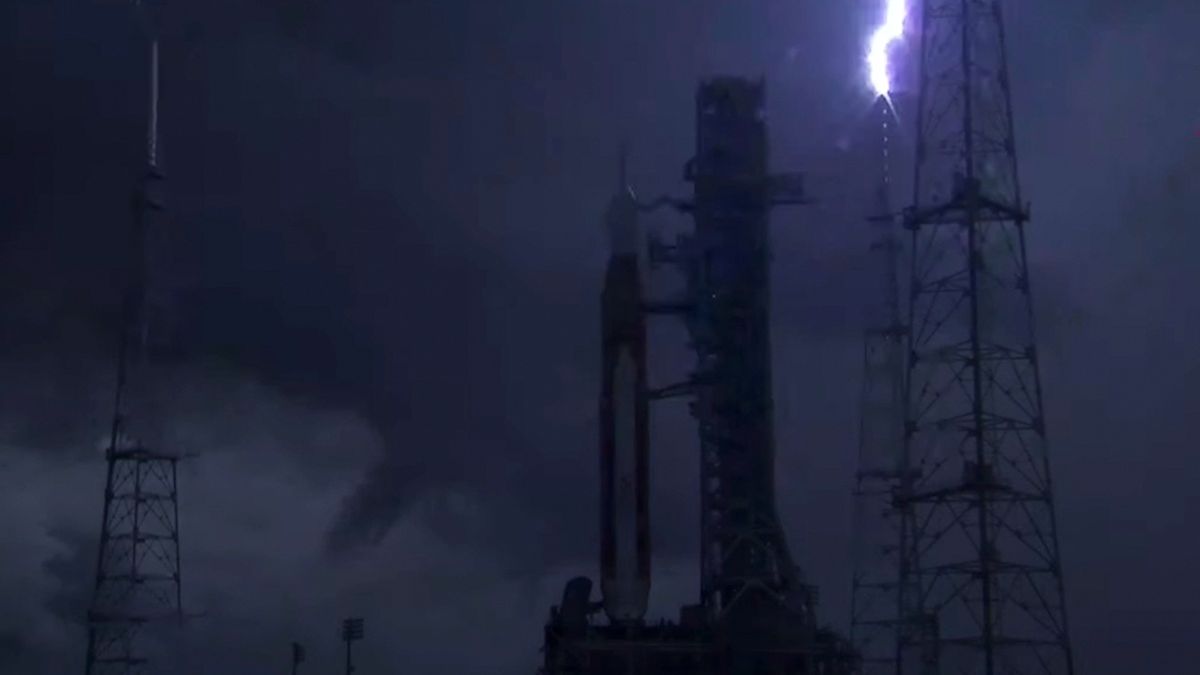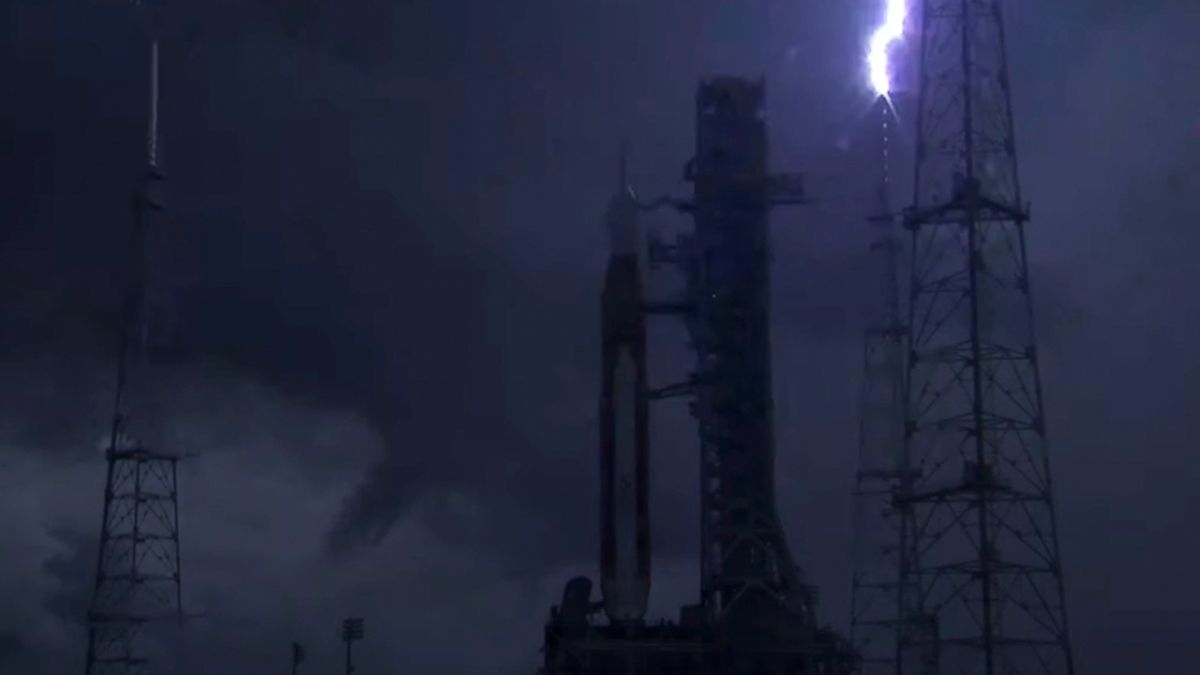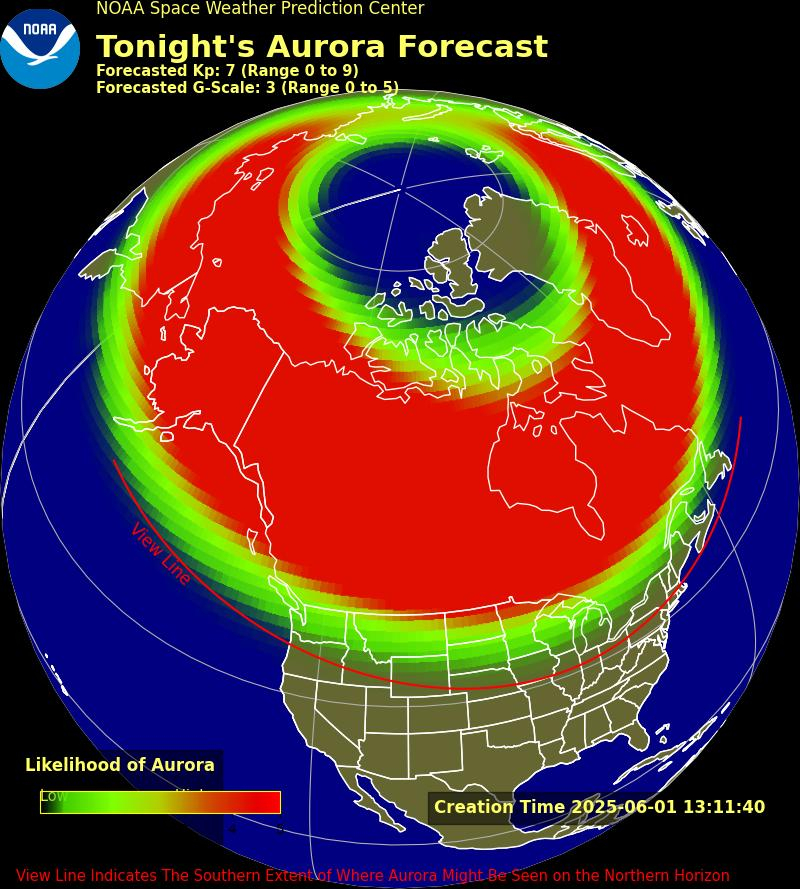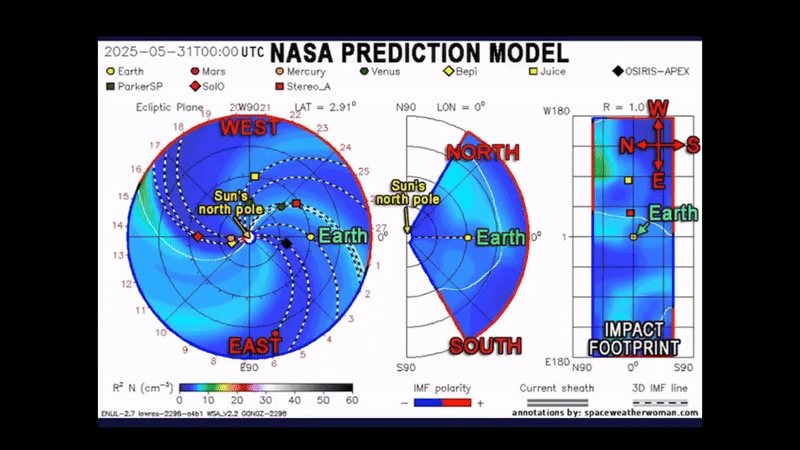
This is why launch pads have lightning towers.
Lightning crackled today (Aug. 27) over Launch Pad 39B at NASA’s Kennedy Space Center in Florida, which will host the highly anticipated liftoff of the agency’s Artemis 1 moon mission on Monday morning (Aug. 29).
The bolts came close to the Artemis 1 stack — a Space Launch System (SLS) megarocket topped by an Orion crew capsule — with three even hitting Pad 39B’s lightning towers.
Related: NASA’s Artemis 1 moon mission: Live updates
More: NASA’s Artemis 1 moon mission explained in photos
Lightning strikes next to Launch Complex 39B at Kennedy Space Center a few moments ago as NASA’s Space Launch System rocket and Artemis I await their Monday launch during a two-hour window opening at 8:33 a.m. EDT. pic.twitter.com/UsfBX1Q2u8August 27, 2022
There’s no cause for alarm; the towers were doing their job, shunting dangerous strikes away from valuable spaceflight hardware. One of 39B’s three towers was similarly struck in early April during an Artemis 1 fueling test, for example, and the SLS and Orion emerged unscathed.
In a blog post update (opens in new tab) this evening, NASA officials said the three strikes today were likely “of low magnitude.” Still, the agency is investigating whether they may have affected the Artemis 1 stack or Pad 39B.
“A weather team has begun an assessment that includes collecting voltage and current data, as well as imagery,” NASA officials wrote in the update. “The data will be shared with a team of experts on electromagnetic environment efforts who will determine if any constraints on vehicle or ground systems were violated. Engineers will conduct a walkdown at the pad tonight, and if needed, conduct additional assessments with subsystems experts.”
Artemis 1 is the first mission of NASA’s Artemis program of lunar exploration, as well as the debut flight of the SLS. The powerful rocket will launch Orion on an uncrewed mission to lunar orbit that will last six weeks from liftoff to splashdown. The main goal is to demonstrate that both vehicles are ready to start launching astronauts to the moon and other deep-space destinations.
Related stories:
The weather isn’t great on the Space Coast today, as the lightning strikes show. But it’s expected to clear up considerably by launch day; weather forecasters with the U.S. Space Force say there’s a 70% chance that Mother Nature will cooperate on Monday morning.
If the weather or technical issues nix that liftoff attempt, however, NASA has two backup opportunities in the current launch window to shoot for — Sept. 2 and Sept. 5.
Editor’s note: This story was updated at 6:45 p.m. EDT on Aug. 27 to include information from the NASA blog post update.
Mike Wall is the author of “Out There (opens in new tab)” (Grand Central Publishing, 2018; illustrated by Karl Tate), a book about the search for alien life. Follow him on Twitter @michaeldwall (opens in new tab). Follow us on Twitter @Spacedotcom (opens in new tab) or on Facebook (opens in new tab).



